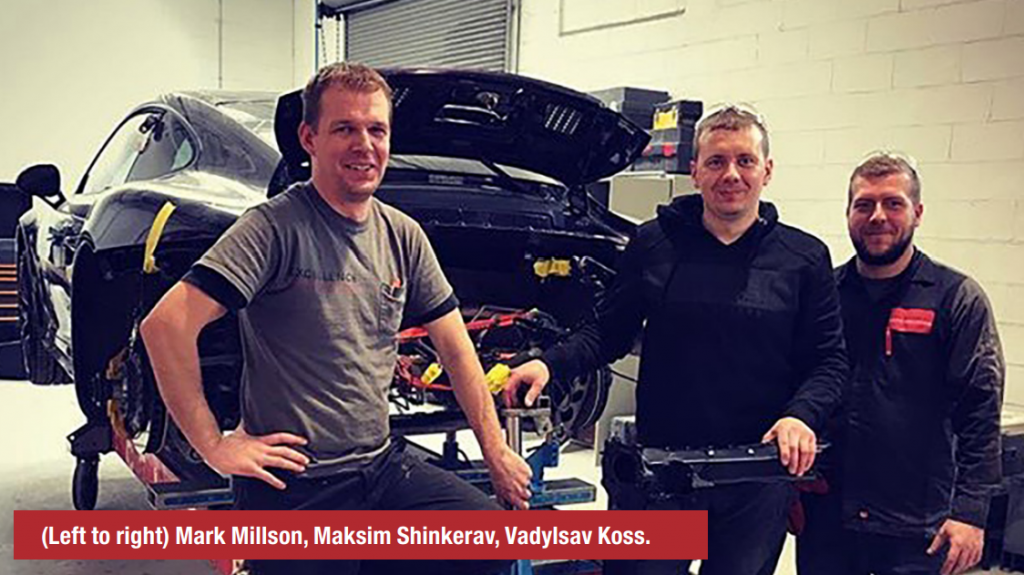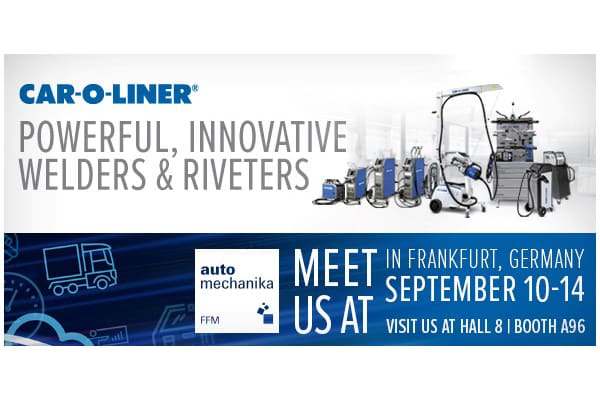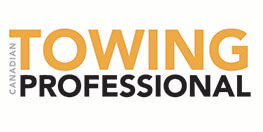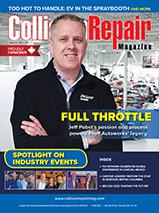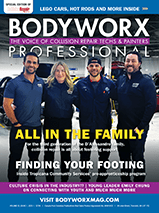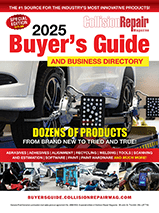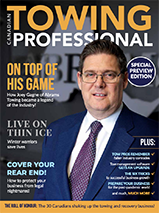Building training into the business model
By Cindy MacDonald
Training is built into the business model of Excellence Auto. It allows the collision repair business to focus on high-end brands, to empower employees and to add new talent through apprenticeships. “Training and continuous education are important for our licensed technicians, especially at this point in time, when the industry finds itself in massive transition with autonomous vehicles becoming more frequent. Also, with our brand we have to adapt to the electrification of the automobile,” says Mark Millson, director of operations. “Training is part of the cost of doing business.”
Just as important as the purchase of parts, Millson says, training has to be part of the business model, “so we are in good standing with OEM brands.”
Excellence Auto is a certified collision repair centre for Audi, BMW, Mercedes, MINI, Porsche, Tesla and Volkswagen. The facility is equipped to repair high-strength steel, aluminum, cast components, carbon fiber and electric cars. “We made a decision long before my time to focus on a certain brands. We do not repair all makes and models–only brands we are certified with,” he explains.
As a result of that decision, the equipment and training programs are set up to process those specific brands. “It leads to a much more efficient repair,” Millson adds.
“Training is important for our technicians, so they have the ability to properly repair these cars. The return on investment in licensed technicians is found in the productivity and improved cycle times,” notes Millson.
Millson comments that even a simple repair, such as removing a door handle, can take longer if the technician is unfamiliar with the particular model, or has never repaired that particular part before. That’s where training pays off, Millson believes. He also notes that potential lack of knowledge can lead to an improper repair and is a liability risk for the facility. This is particularly relevant now in the era of advanced driver-assist systems and the transition to autonomous vehicles.
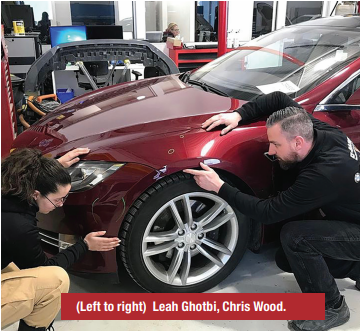
APPRENTICES ADD ENERGY
Excellence Auto has an apprentice program, which means the company culture must include training for the younger generation.
“We do in-house as well as sending them for OEM training,” says Millson. “The additional training exposure accelerates an apprentice on their path toward being a more productive, licensed technician because they are exposed to so much more information.”
Millson believes training apprentices raises the knowledge level of the whole facility. The company’s training program is balanced between opportunities for apprentices, and those for more experienced technicians. Excellence Auto works with local colleges and offers an apprentice program because of its philosophy that training puts students in the driver’s seat for future opportunities.
Seeing the energy and motivation of the young people who come through the apprenticeship program is a really benefit to the business, says Millson. However, he is concerned automotive businesses will have to encourage the younger generation to pursue a career that involves working with their hands. “Millennials want a sense of purpose, a sense of worth,” says Millson. They want to know this is not a dead-end job–that they are going to be trained for the rest of their career.” He views this desire for learning as a winwin-win for the business, the employees and the customers.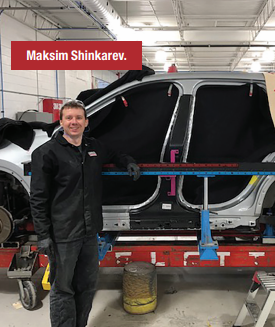
Giving millennials a sense of purpose is how Excellence Auto believes it can reduce the number of trained people who might want to move on. “It’s a risk you have to take. If we can continue to push the envelope with staff involvement, investing in them, whether in training or pensions, benefits, etc., and continue to invest in them, we hope it helps keep those numbers low.”
The way Millson looks at it is if someone does leave and moves on to another company in the industry, he sees it as a positive for the industry as a whole.
He views training as a means of self-empowerment for the individual. “It is important for those people we train to realize we are empowering them by giving them the tools. In fact, we do selfempowerment training, to help people have a stronger sense of purpose,” he says. “We all have to realize we all have a responsibility for the greater good of the industry. If an employee goes somewhere else, he or she will share that knowledge. That is important. You have to realize you are helping the industry as a whole to improve. The pros far outweigh the cons.”
JUST AS IMPORTANT AS THE PURCHASE OF PARTS , TRAINING HAS TO BE PART OF THE BUSINESS MODEL .
Millson makes the point that becoming an apprentice in the auto industry is not for everyone. “Not everybody wants a career path filled with continuous education. Older technicians can find themselves going to school for more training. Not everybody wants that kind of lifestyle and challenge all of the time. Unfortunately, that is the reality. If they want to be in the collision repair world, the auto world, they need to be on the path of learning always.” Millson also believes training is not just for collision technicians, it needs to be there for paint technicians and other, including estimators.
“A big focus for us is our estimators,” he comments. They receive training similar to the technicians because, nowadays they need to know where that sensor is located so if a bumper cover is being removed to be painted and they need to know what has to be done after to recalibrate.” Telling the customer or the insurance company the cost of a repair needs to reflect all the work that is involved, and an estimator can’t do that unless they understand the vehicle.
The strong belief in training as integral to Excellence Auto business model, Millson says, does provide a competitive edge “without a shadow of a doubt.” TD
Lorem ipsum dolor sit amet, consectetur adipiscing elit. Ut elit tellus, luctus nec ullamcorper mattis, pulvinar dapibus leo.
Lorem ipsum dolor sit amet, consectetur adipiscing elit. Ut elit tellus, luctus nec ullamcorper mattis, pulvinar dapibus leo.
Lorem ipsum dolor sit amet, consectetur adipiscing elit. Ut elit tellus, luctus nec ullamcorper mattis, pulvinar dapibus leo.
HISTORY OF TRAINING AT EXCELLENCE AUTO:
The history of making training a mainstay at Excellence Auto goes back to the beginnings of the company. Thirty years ago, Peter Woo, a trained painter at Canada’s most prestigious autobody shop (Sonic Automobiles), met with a master body technician named Josef Stebler. After collaborating on a few private jobs, Peter and Joe started a small shop in 1986. With Peter’s involvement in racing and Joe’s ability to repair the structure of the race cars they worked on, it wasn’t very long before the shop was full of highperformance cars. Within the next few years, partnerships were acquired with a Porsche dealership and a BMW dealership, both known as Toronto’s best for racing enthusiasts. Peter’s history is involved heavily with racing and Porsches, and so his decision to open a business that repairs those high-end vehicles has led to the company’s areas of specialization. Excellence Auto has a total of approximately 65 people employed in two locations: one in Toronto, the other in Concord, Ont


